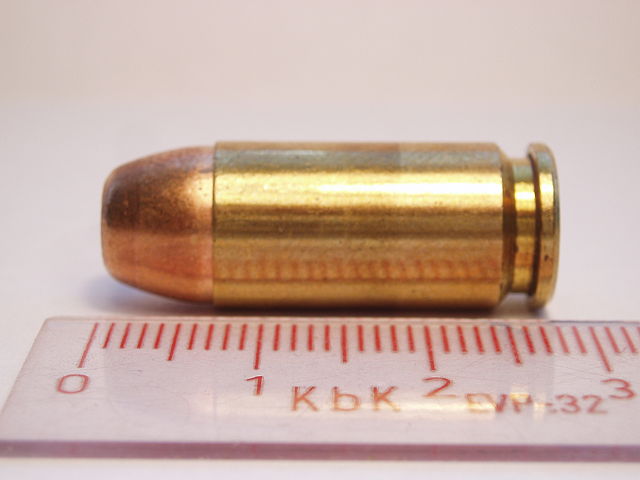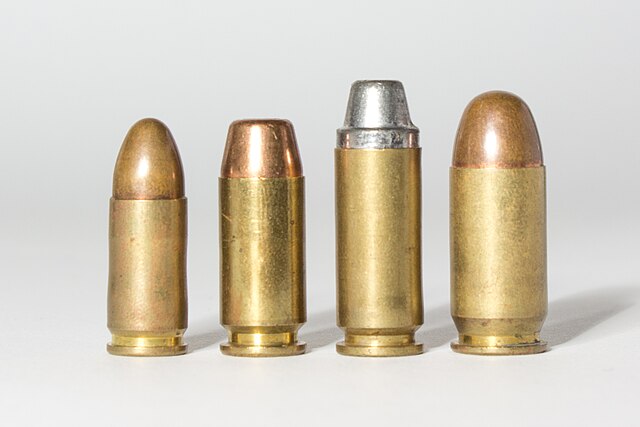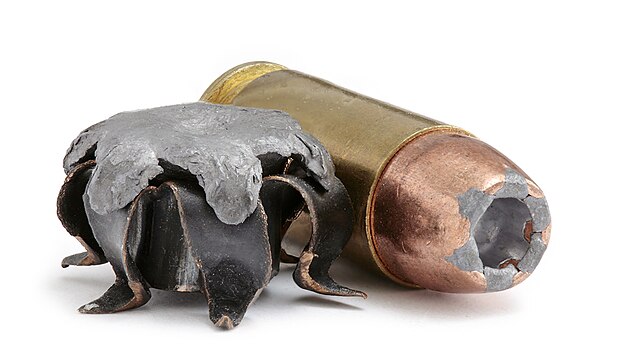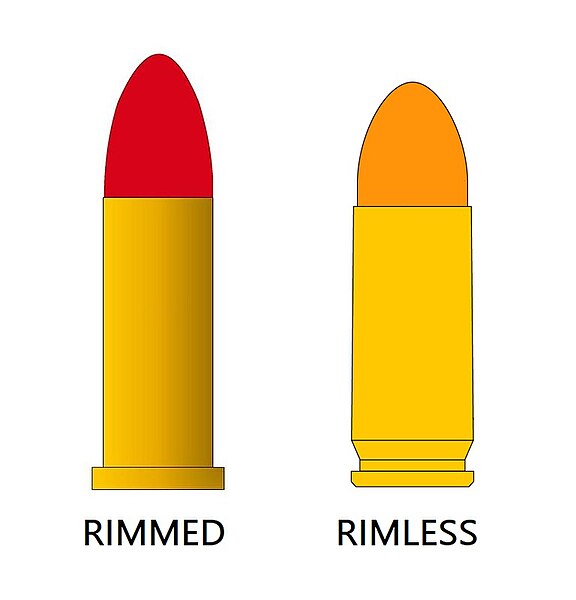The .40 S&W (10.2x22mm) is a rimless pistol cartridge developed jointly by American firearms manufacturers Smith & Wesson and Winchester in 1990. The .40 S&W was developed as a law enforcement cartridge designed to duplicate performance of the Federal Bureau of Investigation's (FBI) reduced-velocity 10mm Auto cartridge which could be retrofitted into medium-frame semi-automatic handguns. It uses 0.40-inch (10 mm) diameter bullets ranging in weight from 105 to 200 grains.
.40 S&W FMJ flat-point cartridge
Left to right: 9×19 mm Parabellum, .40 S&W, 10 mm Auto, .45 ACP
An expanded hollow point bullet (Winchester SXT "Black Talon", left) and an unfired hollow point .40 S&W cartridge (Speer Gold Dot, right)
Frontal view of .40 S&W cartridge, FMJ
A rim is an external flange that is machined, cast, molded, stamped, or pressed around the bottom of a firearms cartridge. Thus, rimmed cartridges are sometimes called "flanged" cartridges. Almost all cartridges feature an extractor or headspacing rim, in spite of the fact that some cartridges are known as "rimless cartridges". The rim may serve a number of purposes, including providing a lip for the extractor to engage, and sometimes serving to headspace the cartridge.
Rimmed .357 Magnum revolver ammunition
Rimmed vs Rimless cartridges
Rimless 9mm Parabellum pistol cartridges







